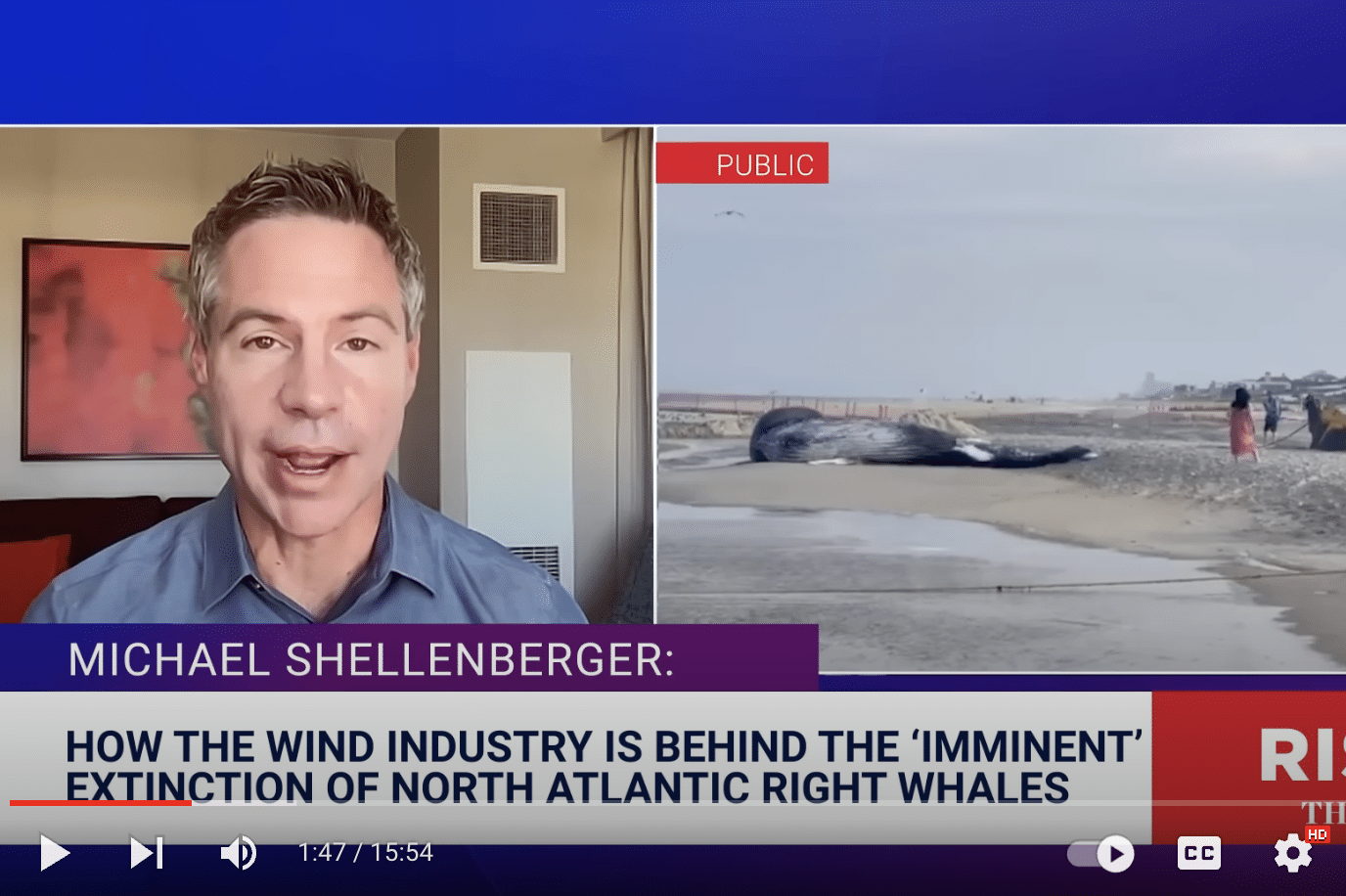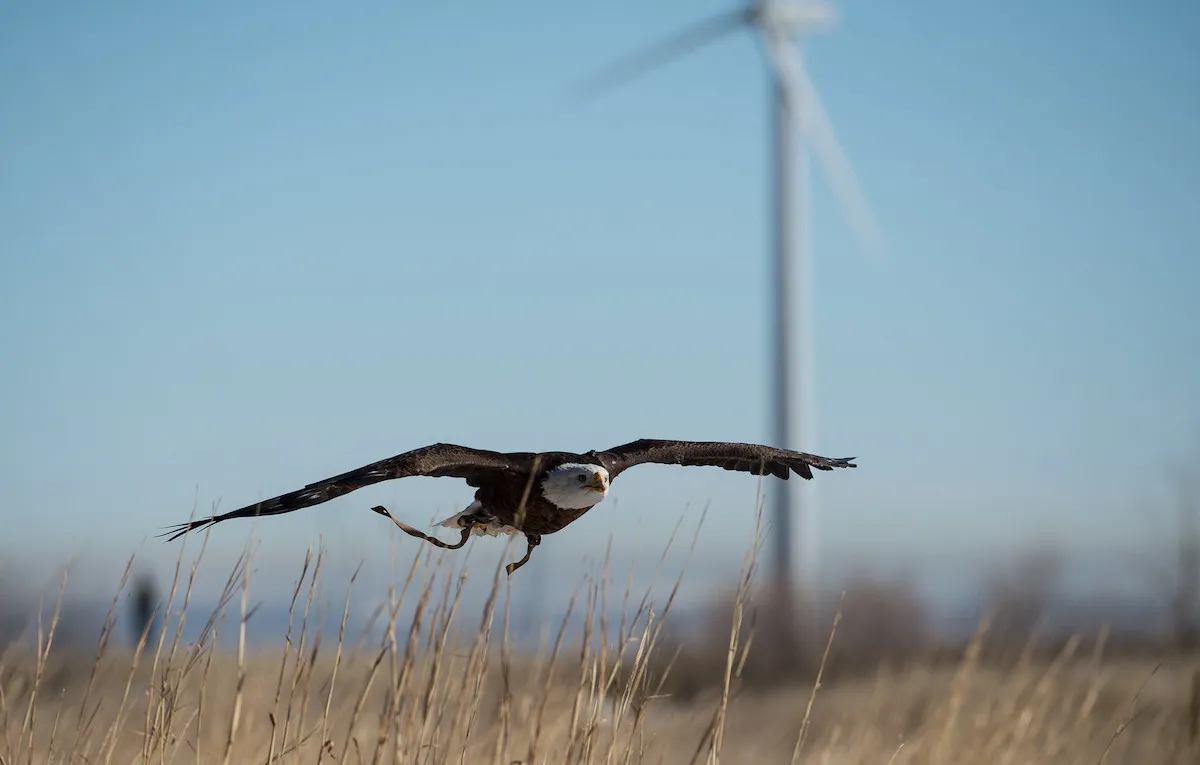- Energy
No convincing evidence that offshore wind activities explain the increase in whale deaths off the U.S. East Coast despite claims of a proven link by offshore wind energy opponents
Key takeaway
Since 2016, there has been an increase in the number of whale strandings occurring off the East Coast of the U.S. NOAA and other experts say that this is likely due to an increase in whale-human interactions, with a large percentage of the whales showing signs of being struck by a vessel or entanglement in fishing gear. Anti-wind activists have blamed offshore wind turbines without providing convincing evidence.
Reviewed content

Verdict:
Claim:
New documentary proves building offshore wind farms is responsible for the increase in whale deaths off the U.S. East Coast since 2016
Verdict detail
Inadequate support: The authors of the claim offer no concrete evidence to support their claim that they proved offshore wind activities are responsible for the recent increase in whales death.
Cherry-picking: The authors ignore evidence presented by whale experts that support other explanations that could be causing an increase in whale deaths, such as entanglement in fishing gear and collision with the growing number of commercial vessels.
Full Claim
New documentary proves building offshore wind farms is responsible for the increase in whale and other cetacean deaths off the East Coast of the United States since 2016
A new video shared on social media called ‘Thrown to the Wind’ claims that the development of offshore wind turbines is proven to cause the death of whales due to increased boat traffic and the use of high-decibel sonar. The producer of this video, Michael Shellenberger who has shared misinformation in the past, published these claims in several posts on social media, as well as in an article he authored in the New York Post. We reached out to Shellenberger asking for concrete evidence linking whale deaths to offshore wind, to which he responded that the evidence was in the film.
A recent increase in whale mortalities off the East Coast of the U.S. has indeed been observed. There have been more than 60 reported whale deaths since December 1st, 2022. Last year, several energy companies began conducting seafloor surveys off the East Coast of the U.S. in preparation for the construction of wind turbines. But do we have evidence linking these surveys and other offshore wind activities to the whale deaths? We analyzed the video and did not find it presented compelling evidence but rather weak circumstantial evidence and reached its conclusion by ignoring alternative hypotheses, as explained in the review below.
NOAA has stated that there is no evidence linking the strandings with the seafloor surveys being carried out by the energy companies. Benjamin Laws, deputy chief for permits and conservation with NOAA Fisheries Office of Protected Resources told the BBC, “There is no information supporting that any of the equipment used in support of offshore wind development could directly lead to the death of a whale”. In a statement to Science Feedback, Dr Michael Moore, a senior scientist at Woods Hole Oceanographic Institution (WHOI) and director of the WHOI marine mammal center, concurred that there is no supporting evidence that offshore wind activities are responsible for the increase in whale deaths. After reading the present article, he confirmed that the information presented in this review is correct.
Experts have also stated that the number of whale strandings and deaths that have occurred over the last year is not that different compared to other years. An increase in whale deaths was first observed in 2016 and scientists still don’t have high confidence in the exact cause of this increase, although there are several likely contributing factors. In 2016, NOAA declared an unusual mortality event (UME) for humpback whales (Megaptera novaeangliae), which was followed in 2017 with a UME declaration for the Northern Atlantic right whale (Eubalaena glacialis) owing to an increase in the number of whale strandings. Both events have been attributed to an increase in human-whale interaction and more specifically collisions with vessels and entanglement in fishing gear[1-3].
Despite scientists’ explanations, several groups opposed to offshore wind development, including the Save the Right Whale Coalition (SRWC), blamed offshore wind development for the whale deaths. SRWC has been described as an “enviro-sounding group … with links to … oil and gas funding”. Readers should also be aware that Lisa Linowes, a member of SRWC who features prominently in the Shellenberger video is also a research fellow for the Texas Public Policy Foundation, a partisan think tank that is known for its opposition against renewable energy and which is reported to be funded by companies associated with fossil fuels. This is a notable conflict of interest given renewable energy sources are a competitor for fossil fuels.
Those opposed to offshore wind development have blamed the increase in whale deaths on the increased traffic and noise produced by the seafloor surveys, which use acoustic techniques to map out the seafloor. Offshore wind development activities, including pile driving and characterization surveys, can produce noise that may negatively affect whale populations. For example, research has shown that exposure to naval sonar can result in behavioral or physiological responses such as interference with foraging or stress which can result in reduced calving success and increase the chance of the whales coming into contact with vessels or fishing gear[4-6]. However, the high-resolution geophysical (HRG) sources used for site characterization put out less energy than other acoustic sources, such as seismic airguns, and operate in much smaller areas. In addition, during HRG surveys, the sound is transmitted in brief, intermittent spurts and research has shown that this is unlikely to result in the incidental take of marine mammals[7]. There are several measures that are put in place to ensure marine mammal safety when conducting these surveys. First, a safety zone is established, the size of which depends on the marine mammals encountered. Secondly, observers are stationed both at the site of the survey and within the exclusion zone to watch for animals. If a marine mammal or turtle enters the safety zone then operations are shut down immediately.
While it is often difficult to determine the cause of death due to the rate of decomposition of the carcasses, data from the Marine Mammal Stranding Center, a not-for-profit organization that rescues and rehabilitates marine mammals in New Jersey, shows that several recently stranded whales showed signs of strikes from vessels and entanglement in fishing gear, although it should be noted this could have occurred after their death. This is supported by recent data from NOAA, which shows that about 40% of the necropsies performed in humpback whales during the ongoing UME show evidence of a ship strike or rope entanglement. The other 60% have been inconclusive. Similar results have been seen in necropsies performed on the North Atlantic right whale (Figure 1), where vessel strike, entanglement and perinatal deaths are the leading causes of mortality.

Figure 1 – Annual North Atlantic Right Whale Mortalities by Cause of Death, 2017-2023. Data from the last few years shows that the leading causes of death are entanglement in fishing gear, vessel strikes, and perinatal deaths. (Source: NOAA)
Vessel collisions are a leading source of large whale mortality around the globe due to the continuous growth of shipping traffic and the increasing speed of vessels[8]. However, it is unlikely that vessels associated with offshore wind activities off the East Coast of the U.S. are causing an increase in whale deaths. This is because the Bureau of Ocean Energy Management (BOEM) has introduced several measures to reduce the likelihood of vessel strikes occurring, from reduced speeds in times when animals are present, to ensuring that there is someone always maintaining a watch from the deck. In a teleconference in January 2023, Brian Hooker, a scientist at BOEM, stated that these vessels have a rigorous reporting requirement so if there is any interaction with a protected species it must be reported immediately. This is not the case for commercial vessels that are not under BOEM’s management.
The area off the East Coast of the U.S., and in particular the New York bight has seen a substantial increase in commercial vessels and shipping traffic over the last few years. In 2017, the Bayonne Bridge that connects Bayonne, New Jersey with Staten Island in New York City was raised by approximately 19.5 meters (64 feet) to allow modern, massive container ships through to the Port of New York and New Jersey. This has led to a substantial increase in container ships visiting the port. According to the Port of New York and New Jersey, 59 vessels with a capacity above 9,000 TEUs visited the port in 2015. By 2021, this number had grown to 532. This is on top of other traffic which includes cruise ships, passenger vessels, fishing boats, and ferries. There are seven species of whales that are regularly observed in the New York bight area, including the humpback whale and the North Atlantic right whale, and this increase in traffic has increased the likelihood of collisions occurring. One study concluded that juvenile humpback whales were particularly at risk from an increase in passenger vessels close to the shore[9]. A high proportion of the humpback whales that are found stranded in this area are juveniles, who typically forage inshore where they feed at the surface. In recent years, the number of passenger vessels in inshore areas has greatly increased which puts the juvenile whales at greater risk of collision.
One final factor that has been suggested to influence whale strandings is climate change[10]. In 2022, the ocean heat content reached its highest point since records began in the 1950s[11], and increasing sea temperatures are resulting in changes in prey distribution and abundance for several species of whale. In addition, changes in temperature can also impact the timing of migration and in some circumstances even reproduction. This has already resulted in changes in the seasonal distribution of whales along the East Coast which increases the likelihood of collisions with vessels or entanglement in fishing gear due to the whales arriving earlier or staying longer in areas where they were not historically present at specific times of the year[12].
Conclusion
Overall, the claim that the recent offshore wind activity in the Atlantic is the proven cause of the increase in whale deaths is unsupported as there is no substantial evidence that offshore wind activity is having an effect on the whales in the area. The authors of these claims have spread misinformation about climate change and renewable energy in the past or have conflicts of interest in the form of affiliations to entities financed by the fossil fuel or nuclear industries. Given the above, it is more likely that this new claim is the result of the documented anti-renewable energy bias of the authors rather than a genuine concern for whales based on solid evidence. By contrast, there is evidence that several other factors can contribute to the increase in strandings, with the most likely being an increase in vessel collisions and fishing gear entanglement as a result of increased traffic in the area. Necropsies of the whales have shown that strikes and fishing gear cause a high percentage of the deaths, however a large percentage of necropsies performed are inconclusive, so further investigations are needed to understand if there are any other factors that could be contributing to the whale deaths.
REFERENCES
- 1. Brown et al. (2019) Potential encounters between humpback whales (Megaptera novaeangliae) and vessels in the New York Bight apex, USA. Marine Policy
- 2. Hayes et al. (2022) U.S. Atlantic and Gulf of Mexico marine mammal stock assessments 2021. Woods Hole (MA): Northeast Fisheries Science Center. Report No.: NOAA technical memorandum NMFS-NE-288.
- 3. Kraus et al. (2005) North Atlantic right whales in crisis. Science
- 4. Miller et al. (2000) Whale songs lengthen in response to sonar. Nature.
- 5. Miller et al. (2022) Behavioral responses to predatory sounds predict sensitivity of cetaceans to anthropogenic noise within a soundscape of fear. Proceedings of the National Academy of Sciences
- 6. Meyer-Gutbrod et al. 2015. Climate-associated changes in prey availability drive reproductive dynamics of the North Atlantic right whale population. Marine Ecology Progress Series
- 7. Ruppel et al. (2022) Categorizing active marine acoustic sources based on their potential to affect marine animals. Journal of Marine Science and Engineering
- 8. Schoeman et al. (2020) A global review of vessel collisions with marine animals. Frontiers in Marine Science.
- 9. Stepanuk et al. (2021). Age-specific behavior and habitat use in humpback whales: implications for vessel strike. Marine Ecology Progress Series.
- 10. Simmonds & Eliott (2009) Climate change and cetaceans: concerns and recent developments. Journal of the Marine biological Association of the United Kingdom.
- 11. Lindsey and Dahlman (2023) Climate change: ocean heat content. Climate.gov,
- 12. Meyer‐Gutbrod et al. (2023) Redefining North Atlantic right whale habitat‐use patterns under climate change. Limnology and Oceanography.



